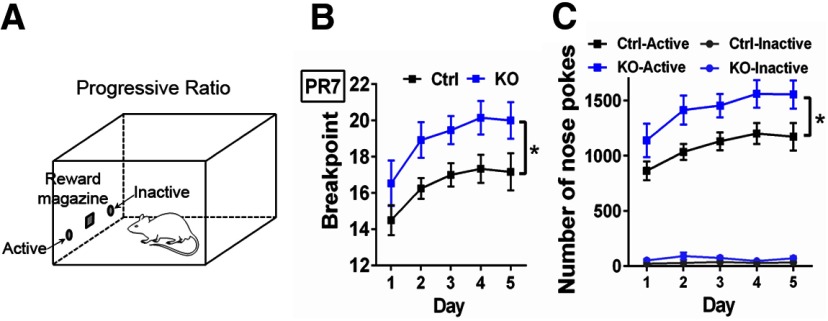Figure 5.
ErbB4 KO mice show increased motivation to work for palatable rewards. A, Experimental set-up of a PR (PR7) schedule in food-restricted (∼85% free-food body weight) ErbB4 KO (KO, n = 13) and control (Ctrl, n = 12) mice. The PR7 is an instrumental learning paradigm where mice are trained to nose poke an active hole to retrieve a palatable reward (14-mg dustless precision pellet, BioServ) that increasingly becomes more difficult to obtain with each subsequent reward delivery (first pellet at seven nose pokes, second pellet at 14 nose pokes, etc.). B, Interestingly, ErbB4 KO mice show increased motivation to obtain palatable food rewards than Ctrl mice as their break point (number of rewards collected in a total of 120 min) was consistently larger at each session (days 1–5; F(1,23) = 5.565, p = 0.0272). C, The larger number of rewards obtained by ErbB4 KO mice were attributed to goal-directed instrumental behaviors, and not to an overall increased locomotor activity because ErbB4 KO mice specifically and more frequently nose poked the active hole than Ctrl mice (F(1,23) = 6.332, p = 0.0193). Data are expressed as the mean ± SEM; *p < 0.05.

